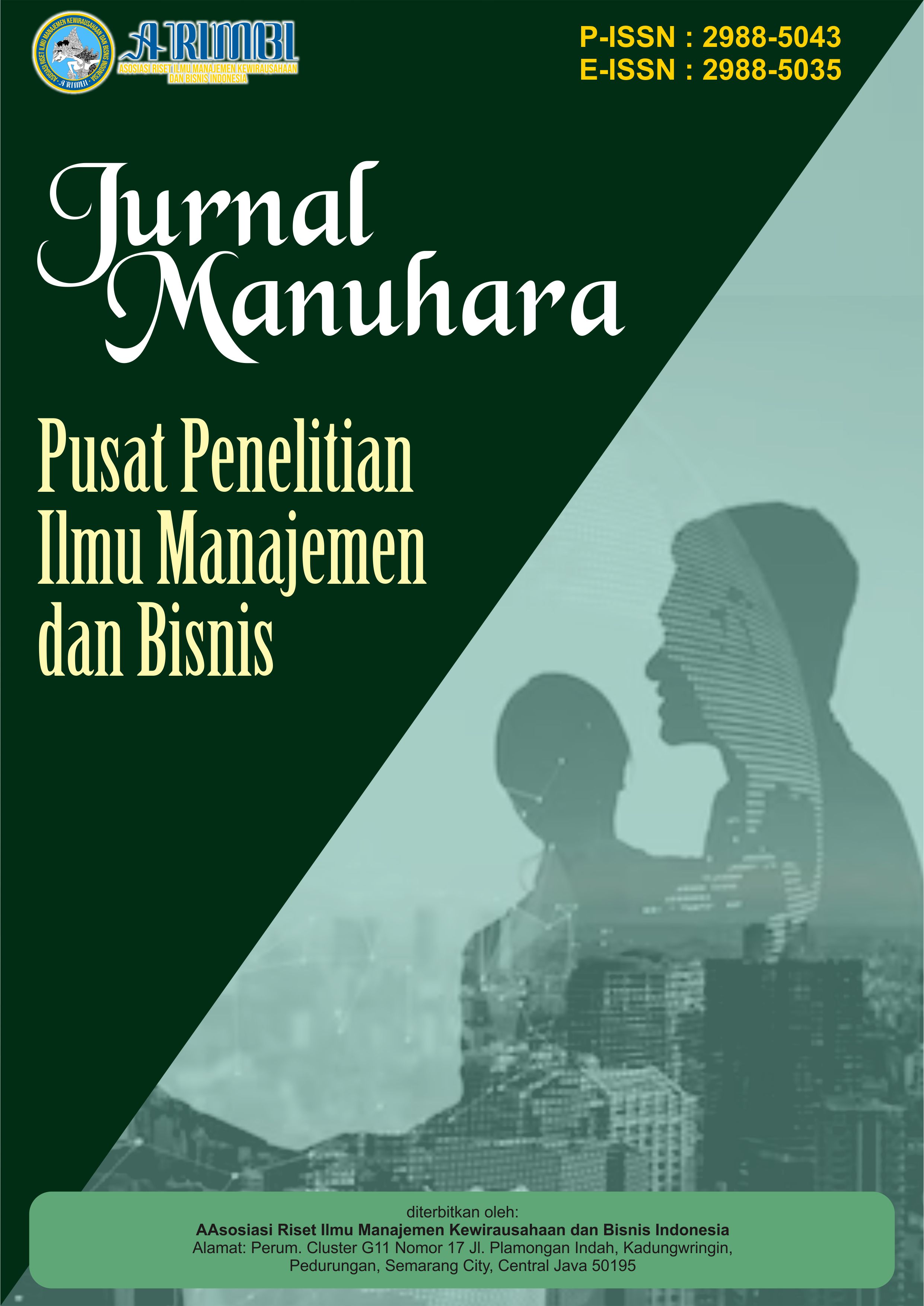Pengaruh Citra Merek dan Gaya Hidup Terhadap Keputusan Pembelian Kopi Azura di Malang
DOI:
https://doi.org/10.61132/manuhara.v3i3.1831Keywords:
Brand Image, Lifestyle, Purchasing Decicions, Azura Coffee MalangAbstract
This research was explanatory research with quantitative research. The variables were Brand Image (X1), Lifestyle (X2) and Purchase Decision (Y). The population in this research were the consumers who made direct purchases at Azura Coffee Malang. The Data collection was done throught observation and questionnaires to 80 respondents with the purposive sampling method. The data analysis of this research used descriptive analysis, validity test, reliability test, classical assumption test, and hypothesis test. The results of multiple linear regression analysis showed the equation Y = 4,758 + 0,261X1 + 0,547X2 + e with a coefficient of determination of 0,652. This showed that there was a significant effect of variables X1 and X2 on variable Y of 65,2%, while the remaining 34,8% was influenced by other variables not examined in this research. The results of the partial test of the Brand Image variable obtained was t count 2,146 > t table 1,66488 and Lifestyle variable was t count 5,620 > t ttable 1.66488 while the results of the simultaneous test F count was 75,119 > F table 3.12. Based on the research results, it can be concluded that Brand Image and Lifestyle variables partially or simultaneously have a positive and significant on the purchasing decisions at Azura Coffee Malang. It is suggested that Azura Coffee Malang will retain its current brand image in order that the brand image meets what the consumers want. Azura coffee is also recommended to keep café’s comfort so that it can consumer purchase decisions.
Downloads
References
Buchary, H. A., & Saladin, D. (2013). Manajemen pemasaran: Ringkasan praktis, teori, aplikasi & tanya jawab. Bandung: Lindakarya.
Ghozali, I. (2018). Aplikasi analisis multivariate dengan program SPSS 25. Semarang: Universitas Diponegoro.
Ismail, M. (2012). Strategi pemasaran untuk membangun citra dan loyalitas merek. Bogor: IPB Press.
Kotler, P., & Armstrong, G. (2014). Principles of marketing (15th ed.). New Jersey: Pearson Prentice Hall.
Kotler, P., & Armstrong, G. (2016). Principles of marketing (14th ed.). New Jersey: Prentice-Hall.
Kotler, P., & Keller, K. L. (2016). Manajemen pemasaran (Edisi ke-12, Jilid 1 & 2). Jakarta: PT Indeks.
Kotler, P., & Keller, K. L. (2016). Prinsip-prinsip pemasaran (Jilid 1 & 2, Edisi ke-12). Jakarta: Erlangga.
Musfar, T. F. (2020). Manajemen pemasaran. Bandung: Media Sains Indonesia Offset.
Saleh, M. Y., & Said, M. (2019). Konsep dan strategi pemasaran. Makassar: CV SAH Media.
Sugiyono. (2013). Metode penelitian kuantitatif, kualitatif, dan R&D. Bandung: Alfabeta.
Sugiyono. (2015). Metode penelitian tindakan komprehensif. Bandung: Alfabeta.
Sumarwan, U. (2012). Analisis faktor-faktor gaya hidup dan pengaruhnya terhadap pembelian rumah sehat sederhana – Studi pada pelanggan perumahan Dinar Mas PT. Ajisaka di Semarang. Jurnal Administrasi Bisnis, 1(1), 12–24.
Sumarwan, U. (2014). Perilaku konsumen: Teori dan penerapannya dalam pemasaran (Edisi ke-2). Bogor: Ghalia Indonesia.
Suryani, T. (2013). Perilaku konsumen: Implikasi pada strategi pemasaran. Yogyakarta: Graha Ilmu.
Tjiptono, F. (2015a). Strategi pemasaran (Edisi ke-4). Yogyakarta: CV Andi.
Tjiptono, F. (2015b). Pemasaran: Esensi & aplikasi (Edisi ke-3, Jilid 1). Yogyakarta: CV Andi.
Downloads
Published
How to Cite
Issue
Section
License
Copyright (c) 2025 Jurnal Manuhara : Pusat Penelitian Ilmu Manajemen dan Bisnis

This work is licensed under a Creative Commons Attribution-ShareAlike 4.0 International License.






